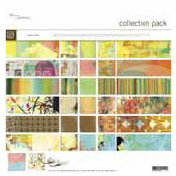
EXTRA 11% OFF Orders $100+ With Code: THANKYOU
 Give a Cheer
Give a Cheer
Papers are from an old Basic Grey monthly kit "Capture" - 9-10 years old. It was the only one I didn't care for. Ledger sheets, numbers not much in the way of color. I thought that these papers would work for these photos that chronicle the incident. Stickers - Paper Studio, die cut - from LSS in Roswell, brads - stash, alphas - Basic Grey. Sorry for the bad photos.
Journaling:
The Roswell incident occurred amid the flying saucer craze of 1947 On June 26, media nationwide had reported civilian pilot Kenneth Arnold's story of seeing what became known as "Flying Saucers". On Saturday night, July 5, 1947, rancher W.W. "Mac" Brazel made a trip from his remote ranch to town, Corona, New Mexico. The ranch had no phone and no radio, leaving Brazel unaware of the flying saucer craze of the prior ten days. As a result, it was not until Saturday night that Brazel connected debris he'd found three weeks earlier with the flying disks in the news.
The debris had been scattered across a square mile of the ranch. Brazel previously had gathered it and pushed it under some brush to dispose of it. When Brazel heard stories of silvery flying discs that Saturday night in Corona, he decided to gather up his prior find. On Sunday, July 6, Brazel dug out the debris and on Monday, July 7, he took it in to the sheriff's office in Roswell. The sheriff called Roswell Army Air Field, which assigned the matter to Major Jesse Marcel. Brazel took Marcel back to the debris site, and the two gathered up more pieces of rubber and tinfoil. Marcel took the material home on Monday night.
On Tuesday morning, July 8, Marcel took the material to his base commander, Colonel William Blanchard. Blanchard reported the finding to General Roger Ramey at Fort Worth Army Air Field (FWAAF). General Ramey ordered the material flown to FWAAF immediately. Marcel boarded a B-29 and made the flight to FWAAF.On July 8, 1947, RAAF public information officer Walter Haut issued a press release stating that personnel from the field's 509th Operations Group had recovered a "flying disc", which had landed on a ranch near Roswell.
As soon as Marcel brought the material to General Ramey's office, both Ramey and his chief of staff Colonel Thomas Dubose identified the material as pieces of a weather balloon kite. The FWAAF weather officer on duty explained to reporters that such "ray wind" devices were used at about 80 weather stations across the country. The balloons were attached to a six-pointed reflective device that looked like a silver star. After launch, the balloon expanded with increasing altitude before bursting around 60,000 feet with pieces then dispersing in their fall to the ground.
Thanks for spreading positivity!
January 26, 2023
January 21, 2023
January 21, 2023
January 20, 2023
January 18, 2023
January 18, 2023
January 18, 2023
January 17, 2023
January 17, 2023
January 17, 2023
January 16, 2023
January 16, 2023
January 16, 2023